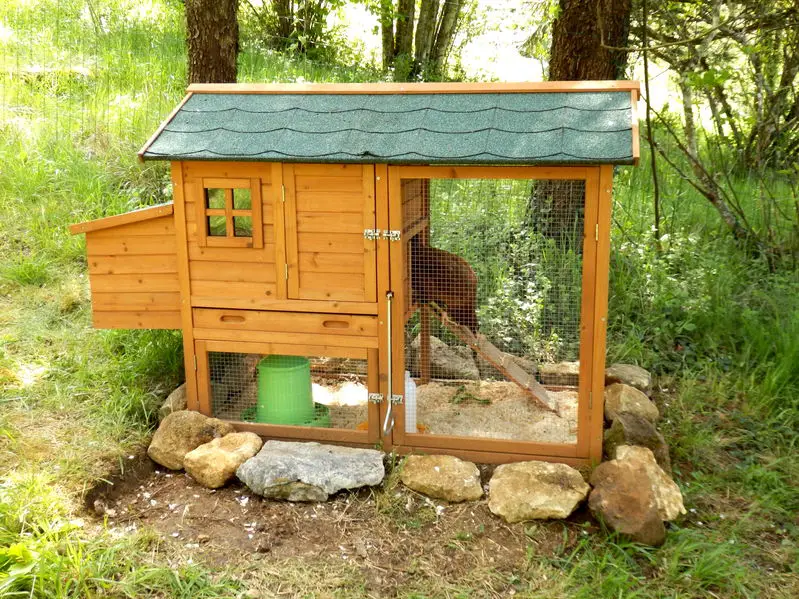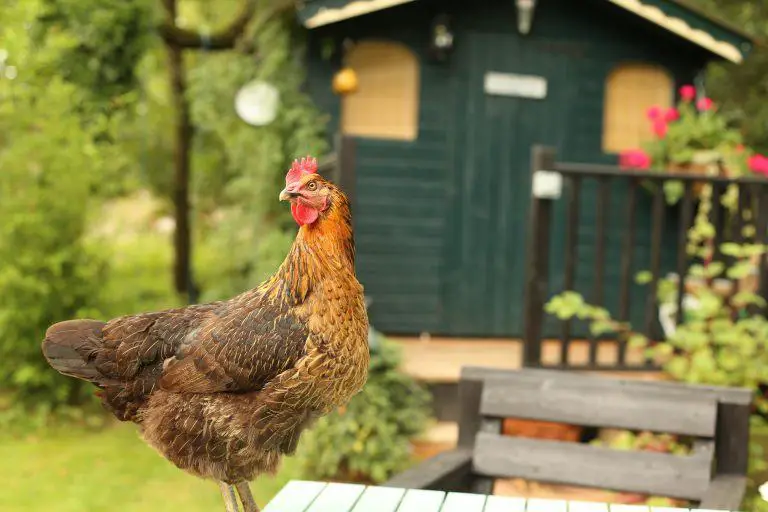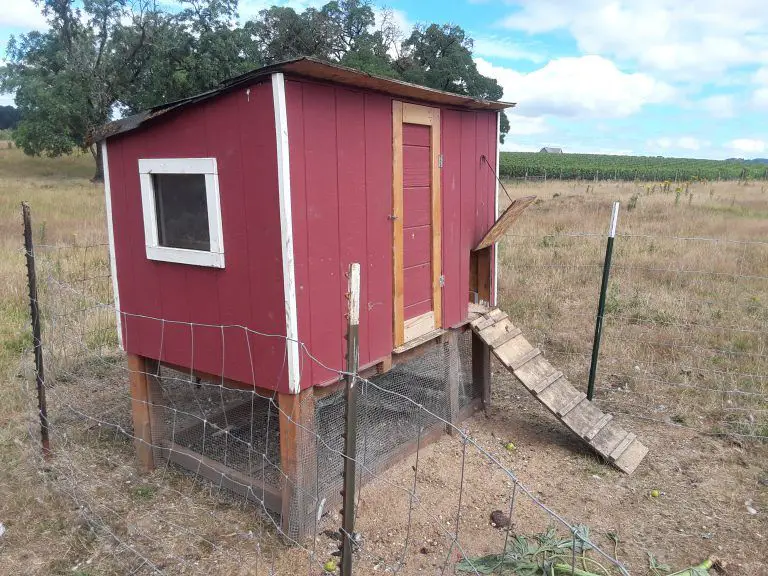Chicken Run Floor Materials – And No, It’s Not Dirt
Things you should and shouldn’t use to cover your chicken run floor.
Okay, so you’ve got the coop and the run built, but what about the flooring? We hope we haven’t left you standing there, scratching your head because we have several solutions!
It’s just as important to provide beneficial flooring as it is to have an overhead structure to protect your chickens. Think of how it would be if you moved into a brand new swanky house, but the floors were dirt? Not good, huh?
Are you ready to jump in and look at some of the best materials for your chicken run floor?


Benefits of Using Chicken Run Flooring Materials
The main reason to cover the flooring of your chicken run with quality materials is for the comfort of your chickens. Who wants to walk in mud and muck?
Other ways your chickens benefit from having suitable flooring in their run.
- Environmental cleanliness for them and you when it comes to gathering eggs or cleaning the coop.
- Prevents mold and bacteria growth that can be fatal to your chickens.
- Deters pests such as rodents.
- Reduces chicken mites.
- Reduces dust containing endotoxins that you inhale when cleaning out the coop.
- Reduces ammonia buildup.
- Insulates during colder seasons.
- Aesthetically pleasing.
Now that we know WHY flooring is essential, let’s see what kind of materials are perfect for flooring.
What happens if the wrong materials are used?
You defeat your whole purpose of having flooring by using the wrong kind of materials. Comfort and cleanliness should be your guides in selecting your materials. Moisture is the biggest enemy, so take that into consideration.
If you opt to use materials such as straw, shavings, paper, or mulch, you will have to contend with problems. You’ll also have to clean the area much more frequently as well as having the added expense of replacing the materials each time.
Keep in mind that chickens produce waste that has bacteria, parasites, and other critters you aren’t aware of. Now imagine this building up and reproducing in the flooring materials.
Ten Types of Flooring Materials for Chicken Runs
So, what exactly do you put in the bottom of a chicken run?
We can tell you that a bare dirt floor is not recommended. Yes, chickens are barefoot creatures, but when it comes to living quarters, it’s vital to provide them something other than moist soil. Remember, we want to enhance cleanliness while reducing moisture.
Click this link to learn about best flooring options for your chicken coop.
Things to look for in flooring materials.
- Insulates against the cold
- Free from toxins
- Free from mold
- Budget-friendly
- Moisture absorbent with a short drying time
We’ve broken it down below:
| Materials | Cleanliness | Pros | Cons |
| Concrete | Good |
|
|
| Hardwood (untreated) | Good |
|
|
| Marmoleum | Excellent |
|
|
| Straw | Poor-Good |
|
|
| Wood Shavings (Warning: cedar and pine are toxic) | Poor |
|
|
| Mulch | Poor-Good |
|
|
| Gravel | Good |
|
|
| Sand (large-grain) | Excellent |
|
|
| Paper | Poor | Cheaper to use |
|
| Dirt | Poor |
|
|
Our BEST Recommendation
We have looked at the various options of chicken run floor materials, weighing the pros and cons, and how the chickens benefit.
The best material for chicken run flooring is concrete, hands-down!
Although it fails in providing insulation as well as some fluff for comfort, you can supplement with non-toxic wood pellets and a little straw.
The worst form of chicken run floor material is, of course, dirt! Place yourself in your chicken’s feet and think about how miserable muddy chicken run flooring is on a cold rainy day.
Concrete can be purchased at your local hardware store, Home Depot, or online.
The last “Cluck…”
Chickeneers are quickly employing ingenuity when it comes to the comfort of their chickens. We foresee the near future as having chicken runs and coops of the future that feature self-cleaning, self-heating flooring. If only…
Also, if you’re thinking of building a chicken run, the Old Farmer’s Almanac shows how to build a sturdy one.
Happy “chickening!”









You are correct. Chickens are barefoot creatures, but living on their floor bare is not an option. Living the floor bare will make it get moist and highly unhealthy. Moist or wet floors will help diseases like coccidiosis to easily brood. You will not like to lose your bird. So to ensure cleanliness, use correct floor materials to will protect your beautiful chicken from cold and diseases
Hello Parameter, that is very true! We hope some of the suggestions in the article will work for your flock.
Dirt, dirt and dirt. We live in northern MN and a concrete floor would be cold cold cold.
Our large run has a roof and is protected from wind with plastic sheeting (vented of course). They are in this confinement from late November until April after which they free range on our 5 acre property that is mixed woods/open grass.
The waste quickly decomposes (or freezes) and has not been a problem
Come spring we rake it out and empty the coop of the deep litter, clean and add new bedding.
Our chickens are healthy and happy and deliver us eggs every day.
We don’t use any lights (heat or otherwise) and our birds have no issue with -20-30 degrees.
Hi Cathy, thanks for your comment! I know of the -20 temps you speak of, growing up in MN, although we were further south. I remember as a kid seeing our hens in our unheated barn and doing just fine. To be honest I think they were more comfortable in the cold vs the hot humid summers! I digress.
I think you are correct in using dirt for your situation. Those are extreme cold temperatures and the dirt will be more insulating for your flocks feet. And since you’re free ranging when it warms up in the spring there is little chance for mud build up etc.
I am thinking others who live in cold climates are shaking their heads in agreement with your comment. I think concrete can still be effective in that situation but a fairly thick layer of bedding material should be added on top of the concrete to protect from the cold concrete. While growing up in MN my parents used straw which was fine in the winter but did not fare well in the summer at all.
I love hearing all opinions and I thank you for your insights here!
Chickens are naturally forest foragers. They need natural run flooring like wood chips directly on the ground or straw. It drains quickly and cushions and insulates their feet just like a loamy soft forest floor does in the wild. I cannot imagine putting my chickens in a run with concrete!
Thanks for your commment. Concrete is easier to maintain but wood chips or other bedding materials can also work fine in the run. Those materials may take more work to keep on top of i.e. cleaning more often, adding more bedding every few weeks/months etc., but certainly not a big deal and it does allow them to scratch/dig which they love to do!
They innately love to dig. Adding concrete hinders that ability. Dirt covered with pelletized pine is great for digging, composting, cleaning, mud, etc. curious why that was omitted from your list.
Hello and thanks for your reply. Concrete can be less work overall but, you’re correct, they LOVE to dig. Adding a thick layer of bedding (6+ inches) on top the concrete will allow them to scratch and dig to their hearts content. Sand would work, or mulch of some kind. Or, leave the run as concrete and use the deep litter method inside the coop so they can do their digging/scratching in there to accomodate those natural instincts.
We use pellet bedding inside our coop but not in the run. We live in a rainy climate and the pellets crumble apart quickly when wet and create a mushy texture. Thanks again and good luck with your flock!